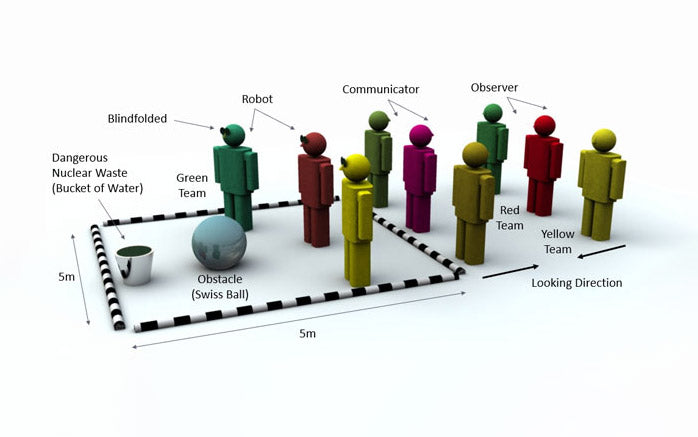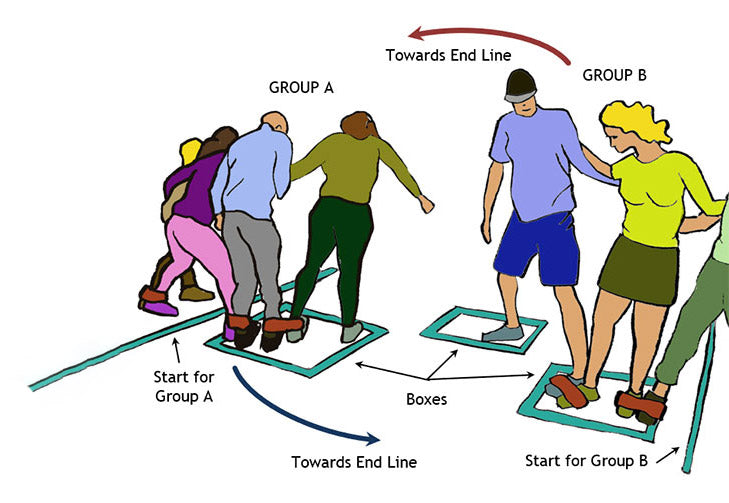Research carried out on many teams in large corporations show that they use suboptimal solutions when dealing with conflicts in teams. Every time there is a conflict in the team, they respond in a way that comes to undermine the team rather than empower it. This article provides guidance on how to avoid bad responses to conflicts and instead use a better approach known as Constructive Collaboration.
The most common responses given to conflicts arising in a team are:
- Ignoring the conflict as if it has not happened
- Reaching a quick agreement to quickly get rid of the conflict
- Using political tactics, negotiations and manipulations to lead the team towards a consensus
These responses lead to suboptimal teams and breed an environment of mistrust and non-involvement.
Fortunately there is a better way to handle conflicts in teams and a good leadership must be aware of these methods so it can take steps to build a better team. The trick is to use Constructive Collaboration. The idea is that rather than avoiding conflicts or trying to get rid of the conflict quickly, you would use the power behind the conflict to discover more creative solutions. There are 4 steps to constructive collaboration:
1. Create a Positive Relationship
Use constructive collaboration to bring all sides to negotiate and encourage everyone to contribute. Help to project an optimistic attitude. Constructive collaboration leads to enhanced credibility and persuasiveness. With this approach team members do not compete and fight over trivial issues. Instead, they take advantage of positive relationships, an environment of trust and uninhibited sharing of information.
The positive environment has a positive feedback loop which leads to strengthened relationships. In contrast, negativity and backstabbing quickly destroy a team’s effectiveness.
2. Collaborate to Solve Problems Rather Than Compete
A team is about working together. There can be benefits when teams compete with each other in a healthy environment, but team members competing with each other inside a team can quickly destroy it. The whole point of having a team in the first place is to get people to work together towards a common goal rather than to compete with each other.
Competitive behaviour leads to taking positions and sticking to those positions using a variety of manipulative tactics. Team member would seem to be more interested in obtaining concessions from others and giving little in return.
Naturally, this kind of competitive behaviour breaks up a team into factions and the focus of the team members shift towards making their factions win as opposed to caring for the overall team or its goals. This leads to an environment of mistrust which further undermines moral.
In contrast, constructive collaborators are focused on information and their mentality is that they need to get as much information as possible first before making decisions. There is a free flow of information and people are happy to share it rather than holding back critical information for personal gain. They are happy to be criticised and criticise others so long as the exchange leads to more information which can help making valid decisions. In short, constructive collaborators are more focused on “we” than “I”.
3. Focus on the Fundamental Problem
Constructive collaborators focus on the underlying problems and attempt to follow solutions that would address all parties’ needs. They understand that if all needs are not addressed, the problem will re-emerge later on and they need to deal with it one way or another.
When conflicts arise, the ideal approach is to carry out a systematic needs analysis and identify the critical problems. This is not an easy task and requires effort. At the outset, the most important attitude is to think of a win/win solution. This helps the parties to avoid taking positions and only aim to win their own personal objectives. Instead, the focus shifts towards understanding the overall needs and coming up with a win/win solution that both benefit from.
4. Focus on Ultimate Goals rather Than Individual Goals
Constructive collaborators are always aware of the ultimate goals of the organisation and understand their mission. Rather than focusing on individual needs which leads to extensive office politics, inside competition for resources and so on, team members focus on collaborating to reach their ultimate goals. Constructive collaborators are keen to look for resources both inside and outside their team as they are entirely focused on the organisational goal and aim to leverage possible resources to achieve it.
This approach creates a positive environment where people are happy to think outside the box rather than focusing on their limitations. They also understand that the goals must be well-defined and measurable so they can see where they are, where you are going and how close they are in achieving them.
Constructive collaboration is just an approach. It can be learned by practice and persistence and a good leadership must be aware of the benefits of this kind of approach to team building and team leading. Ultimately, the true strength of this approach comes from the underlying collaboration and the understanding that collaboration is much more effective than competition.
A balanced approach to conflict management is the best way forward for ideal team building. A great way to allow teams practice over these issues in to provide team building training and conflict management training. Companies can also use team building training materials and conflict management training materials to prepare custom courses for their specific teams.
Soft Skills Training Materials
Get downloadable training materials
Online Train the Trainer Course:
Core Skills
Learn How to Become the Best Trainer in Your Field
All Tags
Training Resources for You

Course Design Strategy
Available as paperback and ebook

Free Training Resources
Download a free comprehensive training package including training guidelines, soft skills training activities, assessment forms and useful training resources that you can use to enhance your courses.

Our Comprehensive Guide to Body Language

Train the Trainer Resources
Get Insights - Read Guides and Books - Attend Courses
Training Materials
Get downloadable training materials on: Management Training, Personal Development, Interpersonal Development, Human Resources, and Sales & Marketing














Leave a comment
All comments are moderated before being published.
This site is protected by hCaptcha and the hCaptcha Privacy Policy and Terms of Service apply.